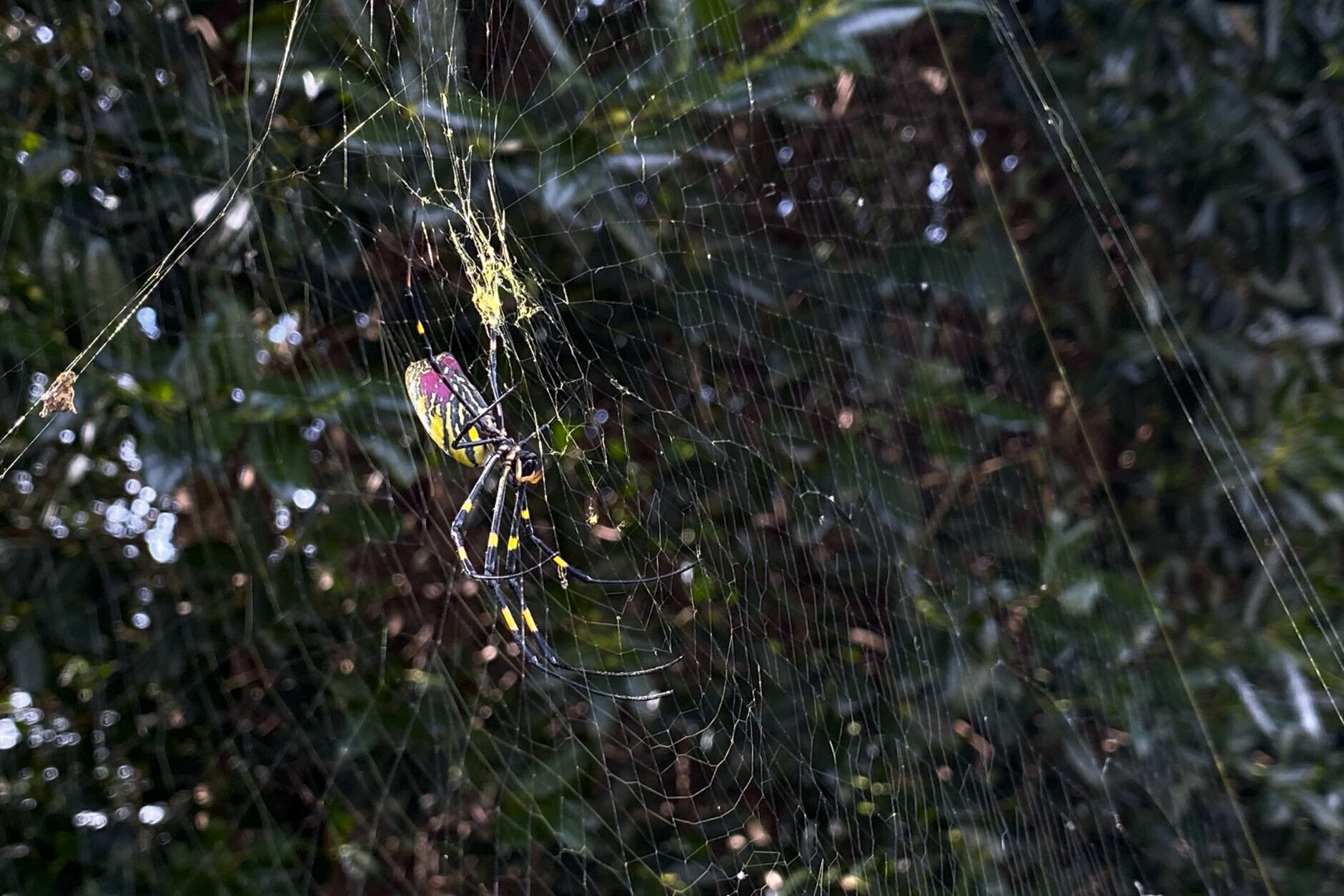
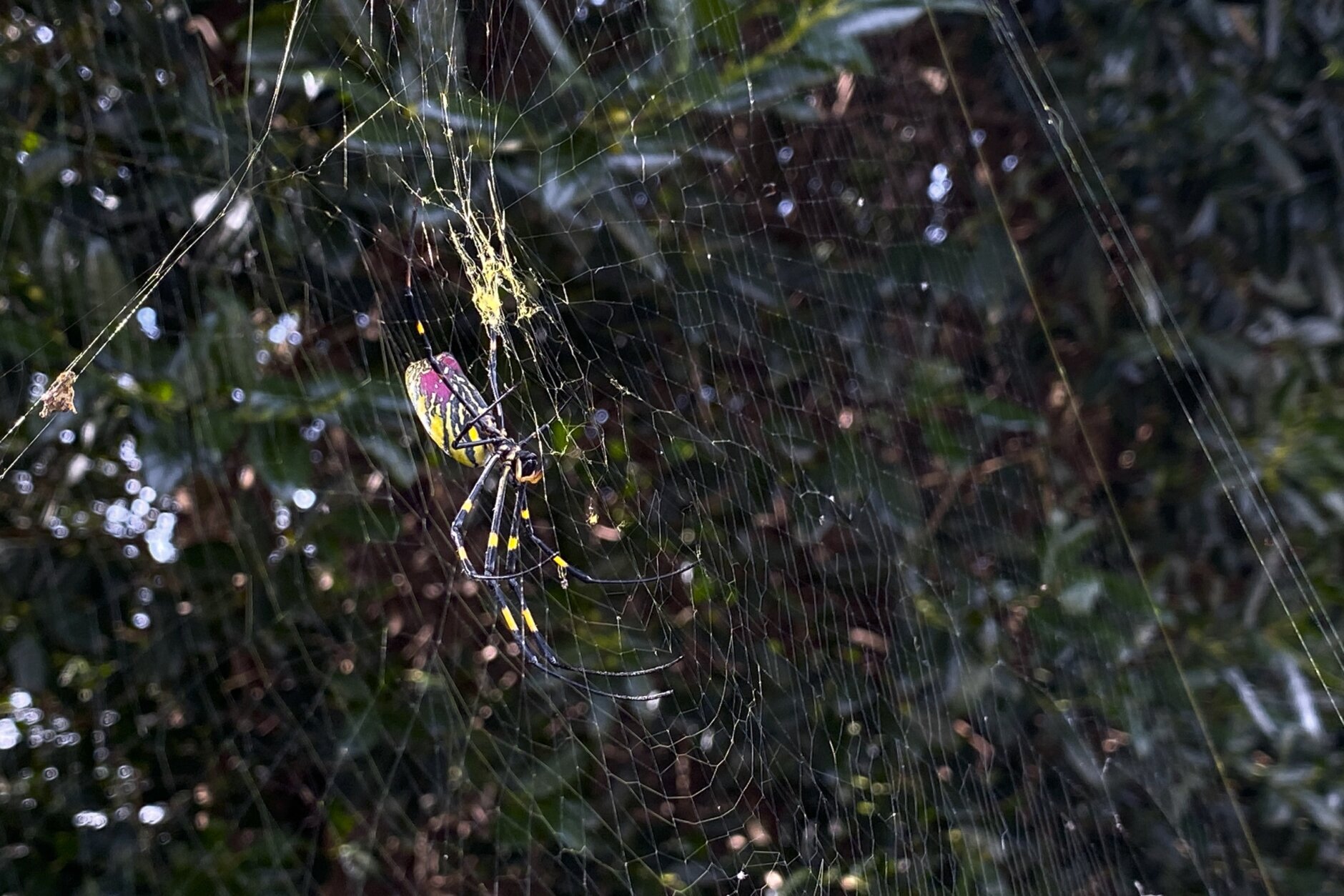
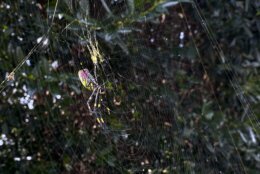
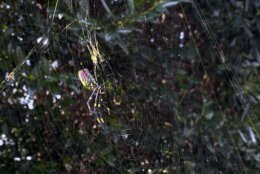
Headlines this week are warning of the arrival of a venomous spider, as big as a human palm, that travels through the wind and is heading to the D.C. area.
But there is no need to be alarmed. These creepy-crawlies won’t create scenes reminiscent of the movie “Arachnophobia.”
“You definitely do not need to run to the hills in fear of the Joro spider,” said Mike “The Bug Guy” Raupp, professor emeritus of entomology at the University of Maryland.
Although it is venomous, the spider is a docile creature and experts believe its fangs are too small to break through the skin of humans or pets, Raupp said.
Last year, the spiders were found in Howard and Anne Arundel counties in Maryland. “Nobody was bitten, nobody died,” Raupp said.
Originally from Asia, this invasive species of spider do come with some benefits, according to Raupp.
“They trap many, many invasive pests, including things like spotted lantern flies and brown marmorated stink bugs, which they love to eat,” Raupp said.
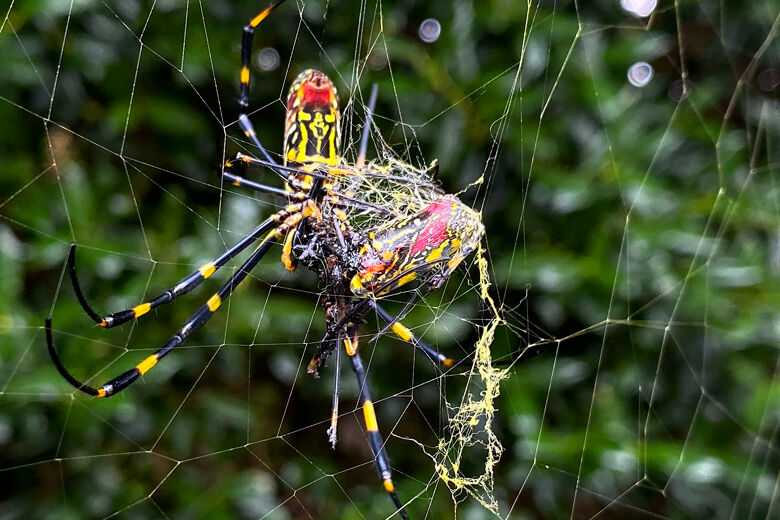
The spiders settled in Southern states and there are populations in the D.C. area.
The bugs get more attention during this time of year when there are more storms, as young Joro spiders hitch rides on those storm fronts in what entomologists call “ballooning.”
Orb-weaver spiders are known for this method of travel. A famous example is the spider from the book “Charlotte’s Web,” where her children take flight.
“These spiders can actually sense changes in wind speed and electrical currents. When they sense these changes, they will let out a strand of silk. That silk then acts like a parachute. They are lifted into the atmosphere, and they can ride storm fronts for hundreds of miles before they drop out of the air,” Raupp said.
These are spiders used to tropical and semi-tropical weather, but as the climate gets warmer, they are making the trek north along with other insect species.
“Expect some Southern species like many other species of insects that basically evolved in more southern latitudes to simply move further north because our winters are more mild now, and perhaps down the road they’ll be able to survive in climates such as Maryland’s,” Raupp said.
The bottom line: the colorful spider is nothing to fear and should be admired, Raupp said.
“These are not spiders that are going to attack people. They can be observed at close range. They’re very beautiful spiders,” he said.
Get breaking news and daily headlines delivered to your email inbox by signing up here.
© 2024 WTOP. All Rights Reserved. This website is not intended for users located within the European Economic Area.








